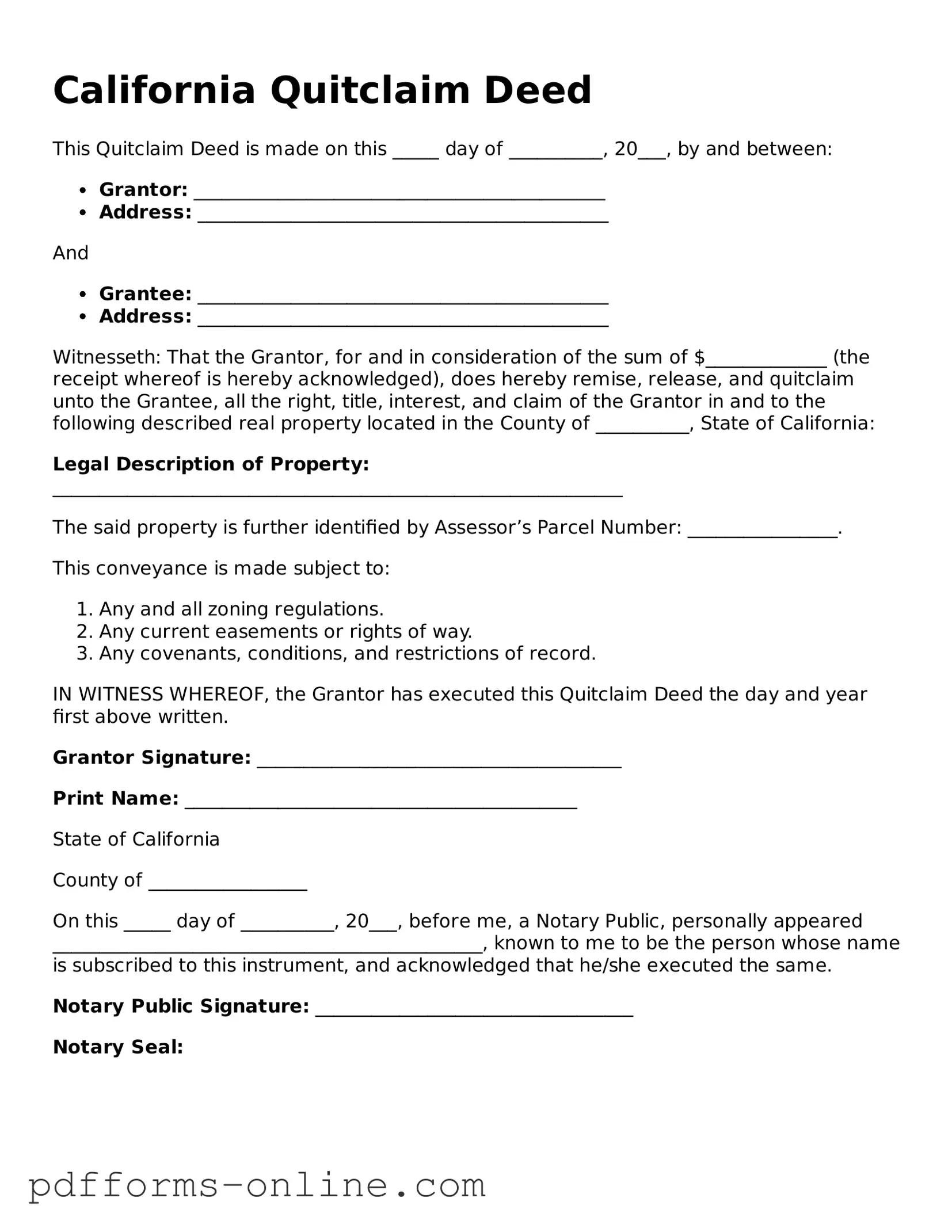California Quitclaim Deed
This Quitclaim Deed is made on this _____ day of __________, 20___, by and between:
- Grantor: ____________________________________________
- Address: ____________________________________________
And
- Grantee: ____________________________________________
- Address: ____________________________________________
Witnesseth: That the Grantor, for and in consideration of the sum of $_____________ (the receipt whereof is hereby acknowledged), does hereby remise, release, and quitclaim unto the Grantee, all the right, title, interest, and claim of the Grantor in and to the following described real property located in the County of __________, State of California:
Legal Description of Property: _____________________________________________________________
The said property is further identified by Assessor’s Parcel Number: ________________.
This conveyance is made subject to:
- Any and all zoning regulations.
- Any current easements or rights of way.
- Any covenants, conditions, and restrictions of record.
IN WITNESS WHEREOF, the Grantor has executed this Quitclaim Deed the day and year first above written.
Grantor Signature: _______________________________________
Print Name: __________________________________________
State of California
County of _________________
On this _____ day of __________, 20___, before me, a Notary Public, personally appeared ______________________________________________, known to me to be the person whose name is subscribed to this instrument, and acknowledged that he/she executed the same.
Notary Public Signature: __________________________________
Notary Seal:
